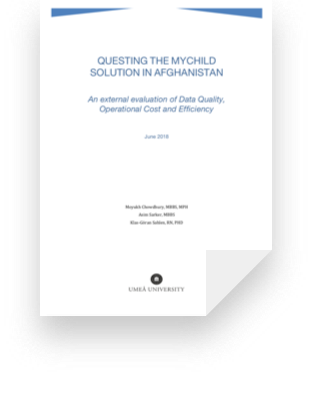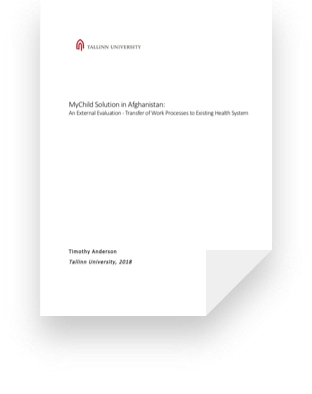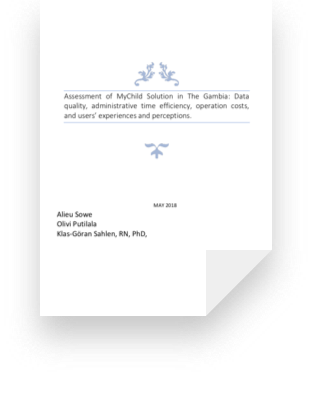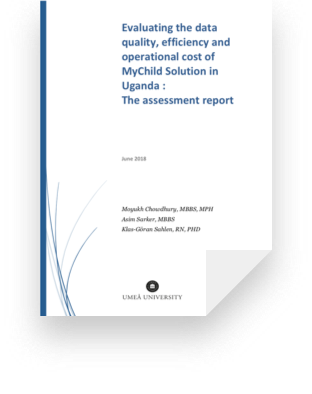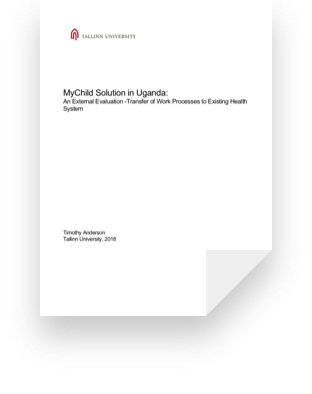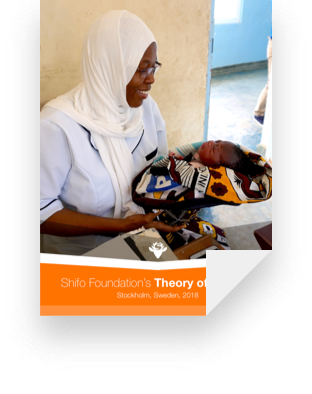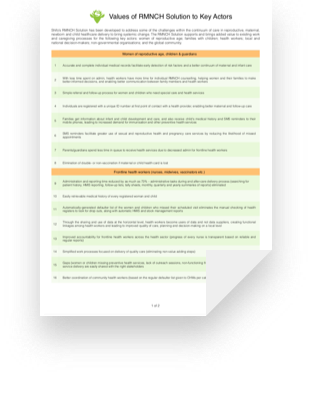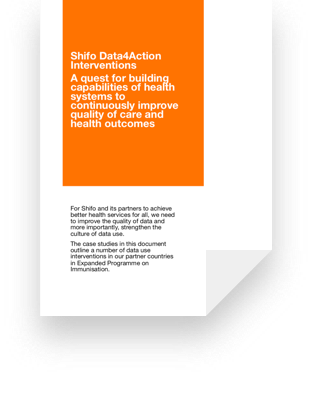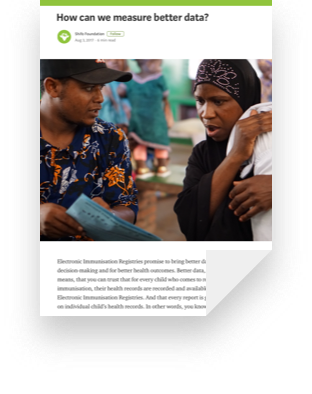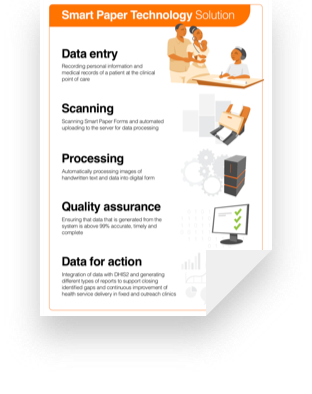eHealth Weaknesses
In 2013, Shifo developed point-of-care electronic applications, based on mobile devices and laptops. Subsequent evaluations revealed a number of major weaknesses and risks with point-of-care eHealth solutions as unavailability of electricity, network and especially resources to sustain the solutions.
- Electricity
- Security
- Internet connectivity
- Sustainability
- High operations costs
- Capacity retention
- Technical support
Point of care eHealth solutions are timely to implement when:
1. Electricity and internet connectivity are available at 95% of health facilities and when they are paid for by the government.
2. The government has a budget to sustain the operational costs of eHealth solutions.
Smart Paper Technology Solution
Shifo Foundation developed and evaluated Smart Paper Technology. Smart Paper Technology solves challenges such as unreliable denominators, poor quality and use of data. The solution is so close to the existing system, that governments take just one step to adopt it.
Smart Paper Technology was evaluated in Uganda, Afghanistan, The Gambia and shows that:
It works everywhere, regardless of infrastructural limitations such as electricity, network, security
It generates data with 99% quality (based on WHO data quality review toolkit)
95% of health service delivery points and districts do continuous quality improvement based on their key performance indicators
It can be sustained with the existing government budgets
It reduces administration for frontline health workers by at least 60%
Shifo's strategic focus with Smart Paper Technology Solution
Systemic change
We focus equally on developing solutions that produce reliable data, and on process innovation to create efficient processes. When solution is implemented all other HMIS and LMIS forms which were used before are replaced
Sustainability
Average running costs of HMIS forms USD 0,50; Smart Paper Technology USD 0,30. Therefore governments can sustain the running costs of the intervention based on the existing budgets
Solution works everywhere
Solution does not depend on electricity, network, security at the point-of-care
Sound Data for Action
Key actors at every level have access to the quality and relevent data, learn how to use it to inform their work to identify and close the actual gaps
Reduced time on admin for health workers
At least 60% reduction in administration for health workers
"Innovative approaches like MyChild can help us provide every child with a digital health record.”
– Dr Seth Berkley, Gavi CEO
How does Smart Paper Technology Solution work? It is very simple…
Data recorded on Smart Paper Forms
Health workers use Smart Paper Forms which are modelled after and replace existing paper forms (e.g. register books, tally sheets, stock books, and summary reports). Therefore, they are not dependent on electronic devices at the health service delivery points.
It is easy for health workers to adopt Smart Paper Forms as it simplifies their work and they only need to take one step to change from the existing to the new work processes.
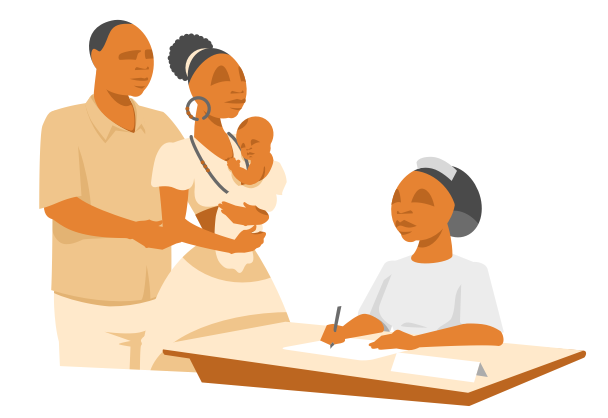
Smart Paper Forms are scanned
Smart Paper Forms are scanned at sub-national (district/provincial level) a point where health workers used to deliver the monthly reports.
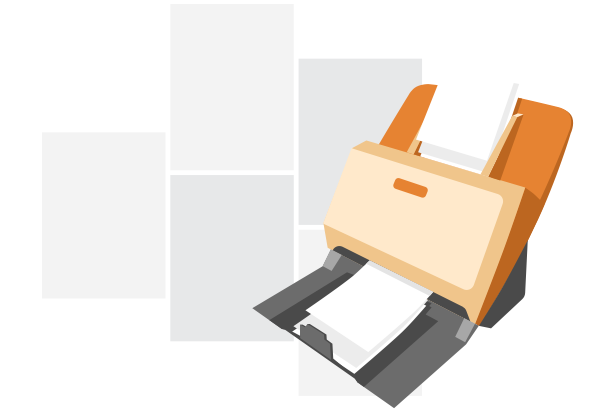
Data is digitised and quality assured
When scanned, Smart Paper Technology digitises and quality assures handwritten data. In some cases manual quality assurance of data is required and system flags those cases.
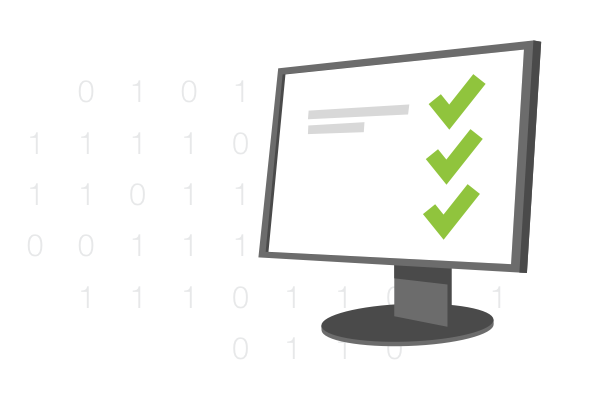
Reports and data for action indicators are generated and integrated with national systems
Solution generates all required HMIS and LMIS reports, integrates data to DHIS2 and triggers data for action interventions from community-national levels.
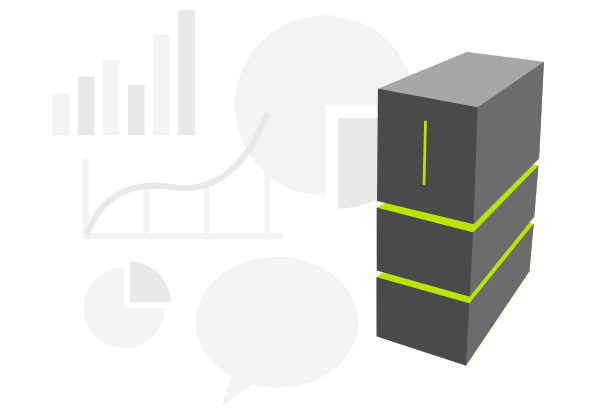
“Congratulations for leading the way with a cutting edge innovation that has the potential to disrupt and shape the future of immunisation delivery”
– Gavi, 2016
What are the data outputs with Smart Paper Technology Solution?
Individual electronic medical records
SMS reminders to remind patients/clients about their next appointment date
Automatic follow-up lists that show the details of defaulters for targeted follow-up
An electronic stock management system that automatically calculates supply needs for the next month/quarter based on individual consumption rates
SMS updates to health workers with their key performance indicators to inform actions at the facility level
Integrated dashboard for decision makers at sub-national and national levels on the performance and gaps of every health facility/region
Integration of data with national systems such as DHIS2, LMIS, CRVS
How is data used and what is it used for?
Data is used across the healthcare chain to help specific end-users achieve their goals. Data use cases from community, facility, sub-national and national levels can be viewed
here.
How do Smart Paper Forms look like?
Smart Paper Forms are adjusted to the national clinical guidelines, standards and languages in each country. Here you can see the Smart Paper Forms used by frontline health workers in each country where Shifo is working.
Implementation Strategy
In addition to having a timely and cost-effective solution, it is equally important to have the right implementation strategy with proper change management methods to ensure that 100% of work processes can be transferred and integrated into the existing health system structure.
Shifo team works with health ministries and partners to strengthen the health system during all phases of its programmes to ensure sustainability and replication of the solution nationally. Gradual transition and local ownership of activities to sustain the solution is done during the 3-5-year implementation phase. This includes investment in necessary infrastructure, capacity building, adjustments and implementation of the solution in all health service delivery points, as well as integration to national standards and information systems, among other activities. During the operationa phase, 100% of all work processes are transferred/integrated to existing health system structure.
Shifo, as a non-profit organisation, charges a license/service fee in order to continuously maintain and develop the Smart Paper Technology™ Engine which is €5 per registered client/patient per year. However, for specific Shifo priority countries the license fee is donated or reduced for utilising the Smart Paper Technology™ Engine.
To cover the costs of the implementation, Shifo receives catalytic funding from funding organisations, UN and development cooperation agencies, NGOs/CSOs and governments. During the implementation, partners collectively co-fund the implementation and agreements are made with the Ministries of Health so they will self-finance operational costs when the implementation is completed.
An external cost analysis has shown that governments can sustain the costs using existing funding.




